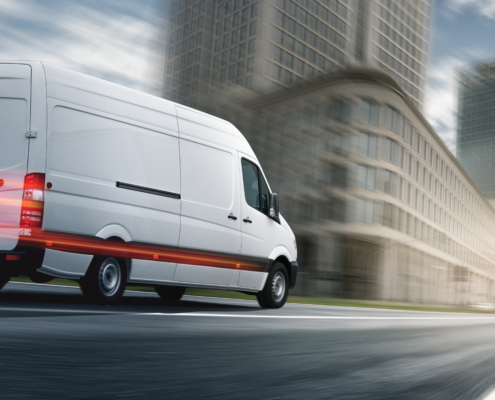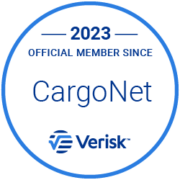
What is Expedited Freight Shipping?
Merriam-Webster defines “expedite” as (1) to accelerate the process or progress of: speed up and (2) to execute promptly. Expedited shipping accelerates the shipping process and progress of shipments, with most deliveries handled same-day, next-day, or within 2-3 days, depending on the distance and the service level. To accomplish this, ground expedite carriers make fewer stops, or eschew stops altogether, along the journey. These carriers sometimes utilize team drivers, with one team member driving while the other rests, to avoid stopping and ensure compliance with safety guidelines. In the air cargo world, expedited shipments are typically loaded and unloaded first- think of it as “priority boarding,” but for goods rather than people.
Of course, this premium service carries a premium price tag. Expedited ground service can cost 1.5-3x more than standard ground transportation, while expedited air can cost 4-10x more than standard air shipping. As a result, expedite is typically utilized only when all other transportation methods have been considered and rejected.
How Does Expedited Freight Shipping Work?
The steps involved in the process of expedited shipping, from order placement to delivery, are not that different from the standard transportation booking process. What is different is the guiding principles. For example, standard shipping is guided by cost-optimization, efficiency at scale, and has some tolerance for delays. Whereas expedited shipping is optimized for speed at all costs, with minimal margin for error.
Here’s how this plays out in the expedited shipping process:
1. Order Placement & Expedited Service Request
- Shipper Initiates Request: The shipper or their logistics service provider places an order for expedited service via TMS, carrier portal, phone, or API.
- Urgency Flagged: The system tags the order as “expedited,” triggering priority workflows and rate engines rather than the standard quoting path.
2. Rapid Rate Quoting & Carrier Booking
- Instant Rate Engine Query: A specialized expedited rate engine calculates costs in real time, pulling in air‑freight, dedicated ground, or team‑driver options.
- Carrier Selection Logic: Algorithms (or the shipper’s 3PL team) choose the fastest, most reliable carrier based on available equipment, transit time, cost and prior performance.
- Immediate Confirmation: Once a rate is approved, the booking is confirmed, often within minutes.
3. Pickup Scheduling & Dispatch
- Dedicated Equipment Assigned: Unlike standard LTL where multiple shippers share space, expedited often uses dedicated sprinter vans, straight trucks, or air charter capacity.
- Same‑Day/Next‑Morning Pickup: Dispatch team schedules pickup as soon as possible. If booked early enough, the shipment may be on the road the same day; otherwise, first‑thing next morning.
- Driver Briefing: Drivers (often in teams for long hauls) receive all details, including the exact pickup window, special handling, and delivery deadline.
4. Expedited Transit & Tracking
- Direct Routing: The shipment moves via the most direct route; no intermediate terminals, no cross‑docking delays.
- Team Drivers or Air: For long distances, a team of drivers rotates to keep the truck moving continuously, or freight is flown on the next available flight.
- Real‑Time Visibility: Advanced telematics provide minute‑by‑minute GPS updates and automated alerts for any exceptions (traffic, weather, etc.).
5. Delivery Coordination
- Pre‑Delivery Confirmation: A dispatcher often calls the consignee to confirm delivery window, parking/loading instructions, or any site‑specific requirements.
- Timed Delivery: The driver aims to arrive within the guaranteed window: overnight, morning‑by‑morning, or a specific hour by day 2 or 3.
- Proof of Delivery (POD): Electronic POD is captured immediately—signature, timestamp, and photograph if required, and sent back to the shipper.
6. Billing & Post‑Delivery Follow‑Up
- Automated Invoicing: As soon as POD is received, billing is generated by the TMS or carrier system, reflecting the expedited rate.
- Customer Notification: Shipper (or 3PL) receives confirmation of delivery plus final invoice or reconciliation report.
- Performance Review: High‑value customers or mission‑critical lanes may include a post‑shipment review for on‑time rate, exception handling, and cost variance.
Types of Expedited Freight Shipping
There are several vehicle types commonly used for expedited freight. To select the right vehicle for your needs, consider factors including shipment size and weight, the distance and duration of the journey, and any special requirements, including temperature control, liftgate or special permits.
Sprinter/Cargo Vans
Sprinter/cargo vans include light commercial vans (e.g., Mercedes‑Benz Sprinter, Ford Transit) that can carry ~500–1,500 lbs., or 1-3 pallets of cargo. Sprinter and cargo vans are ideal for urban pickups and deliveries and are often utilized for small shipments, including time‑sensitive parts, parcels, e‑commerce rush orders. Sprinter vans often utilize team drivers to ensure non-stop transit on tight deadlines.
Box Trucks
Box trucks are larger than sprinter vans, and can carry cargo up to 3,500 lbs., or about 4-6 pallets. Box trucks are also often used for urban transportation, as well as regional transportation needs. Their larger cargo carrying capacity makes them ideal for moving and relocation services, event and exhibition logistics, and specialty services such as catering or floral services.
Straight Trucks
Straight trucks are even larger, with a cargo box that is usually 16′–26′ in length and capable of hauling ~5,000–10,000 lbs. or 7-14 pallets. Straight trucks offer faster loading/unloading than full truckload trailers and good city/regional coverage. Straight trucks are often used for regional expedited routes and high‑value shipments requiring secure transport.
Hot Shots
Hot shots refer to class 3–5 pickup trucks, such as Ford F‑350 or RAM 3500, towing small flatbed or enclosed trailers. Hot shot trucks can haul ~5,000–12,000 lbs. and are often used to transport irregular‑shaped or overweight loads that require permits, including construction materials and oil & gas parts.
Tractor Trailers/Full Truckload (FTL)
Tractor trailers are standard 53′ trailers pulled by Class 8 tractors and can carry up to ~45,000 lbs. of cargo. Full truckload is best for long‑haul nonstop routes for large shipments, bulk urgent freight, cross‑country expedited delivery. Team drivers can also be utilized for non-stop transit.
Air Cargo
Air cargo can be transported either via charter, a flight dedicated to cargo, or as belly freight, cargo that is stowed in the cargo hold of a commercial plane flight. Charter flights can carry up to ~50,000 lbs., whereas belly freight is limited to ~5,000-10,000 lbs. Air cargo is the fastest option, and is used for international expedited freight, extremely time‑sensitive or perishable goods.
What Are The Benefits of Expedited Freight Shipping?
Expedited shipping delivers several advantages for shippers, particularly when time, reliability, and business continuity are a priority:
Faster Delivery Times
Because shipments move directly from origin to destination with minimal or no stops, transit times can be reduced dramatically, offering same-day, overnight or 1-3 day delivery, depending on the mode and distance.
Improved Reliability and Predictability
Due to its premium nature, expedited shipping offers higher service levels and more precise delivery windows, often including guaranteed delivery times and refunds when delivery times are missed. Expedite carriers also often offer real-time load tracking and proactive status updates.
Customer Satisfaction
Who doesn’t want fast, reliable shipping? In fact, it’s become an expectation. For industries where speed equals service, such as B2B, healthcare, and ecommerce, expedite can be a key advantage.
Reduced Downtime in Manufacturing
Expedite can help you avoid costly manufacturing line stoppages or missed production deadlines and keep your supply chain running.
Increased Flexibility
Whether utilized frequently or only in “emergency” scenarios, expedite is a powerful tool that can provide supply chain flexibility when you need it most. For example, Apple recently utilized chartered cargo flights to transport 1.5 million iPhones from India to the U.S. in order to avoid forthcoming tariffs.
Reduced Risk of Stockouts
Expedite can help you minimize lost sales and customer dissatisfaction. After all, you can’t sell goods that aren’t on the shelves when your customers are ready to buy.
What Are The Challenges of Expedited Freight Shipping?
Expedited shipping has tons of advantages, but its not a panacea. Here are some challenges to watch out for.
Higher Costs
Expedited is a premium service, and it has the price tag to match. Utilizing expedited in emergency or critical situations is to be expected, but an over-reliance on expedited is not only costly, but may be symptomatic of deeper supply chain issues.
Capacity Limitations
One of the limitations of expedite is the relatively small number of providers and vehicles that are available as compared to full truckload or LTL. Capacity may be particularly tight during high-demand times such as peak season, holidays, or in response to weather events.
Limited Availability in Remote Areas
The limited available capacity of expedited vehicles is even more acute in rural or remote areas.
Weather and Environmental Factors
Expedite is not weather-proof. Severe weather can ground flights, shut down highways, and cause delays.
Regulatory Challenges
While carriers that operate sprinter vans hauling less than 10,001 lbs. GVWR (gross vehicle weight rating) are exempt from Federal Motor Carrier Safety Regulations that limit hours of service, other expedited vehicle types are subject to these regulations. Also, some expedited loads may require oversize/overweight permits. Carriers must also adhere to HAZMAT requirements, custody tracking (for example, for pharmaceuticals), and customs regulations related to cross-border shipments.
Industries Using Expedited Freight
Here are some real-world use cases for expedite across several industries:
- Healthcare: Caring for patients requires speedy delivery of medical devices, surgical tools, pharmaceuticals, PPE, vaccines and more. Stockouts can cost lives. For example, when a hospital in a rural area needs ventilator components during an outbreak of respiratory illnesses, expedite comes to the rescue.
- Automotive: Production delays in the auto industry can cost thousands of dollars per minute, and production lines that run on lean inventory can be at risk. When a Tier 1 supplier’s shipment of critical parts such as fasteners, sensors or drivetrain components is delayed, expedite is utilized to speed up automotive logistics to avoid shutting down the assembly line.
- Retail and e-commerce: When stockouts occur, retailers not only lose a sale, they may lost the customer for good, as consumers will often switch to other brands when their preferred brand is not available. To avoid costly stockouts, retailers turn to expedite to ensure the products customers want are on store shelves.
- Technology: Similar to a manufacturing line, downtime costs for data centers are massive. When data centers need critical components, such as a replacement server or circuit board, expedite saves the day.
When to Consider Expedited Freight Shipping
- When time is critical: Tight delivery windows, productions deadlines, or product launches often call for expedited shipping.
- Preventing and recovering from disruption: Expedite can help you avoid backorders and stockouts, or help you recover when your regular carrier misses a pickup or delivery window.
- Supporting your JIT (just-in-time) or lean supply chain: Keep critical parts and components flowing with expedited shipping.
- When shipping high-value or sensitive goods: Expedite is a secure and reliable option for time-sensitive, temperature-controlled, or high-value shipments.
- During peak season: When your usual carrier is not available during peak shopping seasons, such as holidays or back-to-school, expedite can help you avoid stockouts, lost sales, and disappointed customers.
Conclusion
When time is of the essence, and getting goods, medicines, critical components and essential parts delivered ASAP is necessary, expedited shipping
Expedited freight shipping is a vital option in today’s fast-paced, high-stakes supply chains. While it comes at a premium, the speed, reliability, and flexibility it offers can be invaluable during time-sensitive scenarios or operational disruptions. From preventing stockouts to keeping manufacturing lines moving, expedite ensures that critical shipments reach their destination without delay. By understanding when and how to use expedited freight, shippers can make smarter, more strategic transportation decisions that support both customer satisfaction and business continuity. Whether you manage your logistics in-house, utilize freight broker solutions, or rely on a managed transportation partner to oversee your supply chain, consider the role expedite can play in your transportation mix.
Sources
- https://sheerlogistics.com/blog/what-is-full-truckload-shipping/
- https://sheerlogistics.com/industry-automotive/
- https://sheerlogistics.com/blog/ltl-vs-ftl-which-shipping-method-is-right-for-your-business/
- https://sheerlogistics.com/freight-broker-solutions/
- https://sheerlogistics.com/managed-transportation-services/
- https://www.cbsnews.com/news/apple-airlifts-iphones-india-tariffs/







